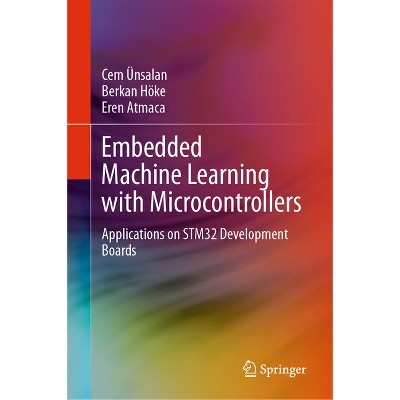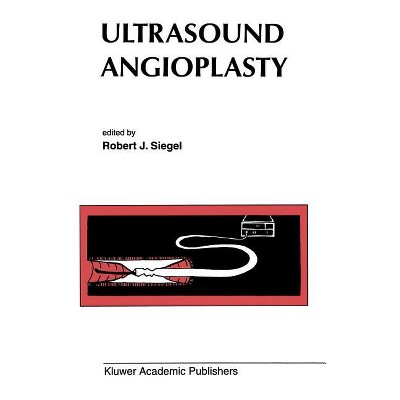Sponsored

Circuit-Technology Co-Optimization of Sram Design in Advanced CMOS Nodes - by Hsiao-Hsuan Liu & Francky Catthoor (Hardcover)
In Stock
Sponsored
About this item
Highlights
- Modern computing engines--CPUs, GPUs, and NPUs--require extensive SRAM for cache designs, driven by the increasing demand for higher density, performance, and energy efficiency.
- About the Author: Hsiao-Hsuan Liu received her Ph.D. degree in Electrical Engineering from KU Leuven, in collaboration with imec, Leuven, Belgium, in 2024.
- 288 Pages
- Computers + Internet, Embedded Computer Systems
Description
Book Synopsis
Modern computing engines--CPUs, GPUs, and NPUs--require extensive SRAM for cache designs, driven by the increasing demand for higher density, performance, and energy efficiency. This book delves into two primary areas within ultra-scaled technology nodes: (1) advancing SRAM bitcell scaling and (2) exploring innovative subarray designs to enhance power-performance-area (PPA) metrics across technology nodes.
The first part of the book utilizes a bottom-up design-technology co-optimization (DTCO) approach, employing a dedicated PPA simulation framework to evaluate and identify the most promising strategies for SRAM bitcell scaling. It offers a comprehensive examination of SRAM bitcell scaling beyond 1 nm node, outlining a structured research cycle that includes identifying scaling bottlenecks, developing cutting-edge architectures with complementary field-effect transistor (CFET) technology, and addressing challenges such as process integration and routing complexities. Additionally, this book introduces a novel write margin methodology to better address the risks of write failures in resistance-dominated nodes. This methodology accounts for time-dependent parasitic bitline effects and incorporates timing setup of write-assist techniques to prevent underestimating the yield loss.
In the second part, the focus shifts to a top-down DTCO approach due to the diminishing returns of bitcell scaling beyond 5 Å node at the macro level. As technology scales, increasing resistance and capacitance (RC) lead designers to adopt smaller subarray sizes to reduce effective RC and enhance subarray-level PPA. However, this approach can result in increased inter-subarray interconnect overhead, potentially offsetting macro-level improvements. This book examines the effects of various subarray sizes on macro-level PPA and finds that larger subarrays can significantly reduce interconnect overhead and improve the energy-delay-area product (EDAP) of SRAM macro. The introduction of the active interconnect (AIC) concept enables the use of larger subarray sizes, while integrating carbon nanotube FET as back-end-of-line compatible devices results in macro-level EDAP improvements of up to 65% when transitioning from standard subarrays to AIC divided subarrays. These findings highlight the future trajectory of SRAM subarray design in deeply scaled nodes.
From the Back Cover
Modern computing engines--CPUs, GPUs, and NPUs--require extensive SRAM for cache designs, driven by the increasing demand for higher density, performance, and energy efficiency. This book delves into two primary areas within ultra-scaled technology nodes: (1) advancing SRAM bitcell scaling and (2) exploring innovative subarray designs to enhance power-performance-area (PPA) metrics across technology nodes.
The first part of the book utilizes a bottom-up design-technology co-optimization (DTCO) approach, employing a dedicated PPA simulation framework to evaluate and identify the most promising strategies for SRAM bitcell scaling. It offers a comprehensive examination of SRAM bitcell scaling beyond 1 nm node, outlining a structured research cycle that includes identifying scaling bottlenecks, developing cutting-edge architectures with complementary field-effect transistor (CFET) technology, and addressing challenges such as process integration and routing complexities. Additionally, this book introduces a novel write margin methodology to better address the risks of write failures in resistance-dominated nodes. This methodology accounts for time-dependent parasitic bitline effects and incorporates timing setup of write-assist techniques to prevent underestimating the yield loss.
In the second part, the focus shifts to a top-down DTCO approach due to the diminishing returns of bitcell scaling beyond 5 Å node at the macro level. As technology scales, increasing resistance and capacitance (RC) lead designers to adopt smaller subarray sizes to reduce effective RC and enhance subarray-level PPA. However, this approach can result in increased inter-subarray interconnect overhead, potentially offsetting macro-level improvements. This book examines the effects of various subarray sizes on macro-level PPA and finds that larger subarrays can significantly reduce interconnect overhead and improve the energy-delay-area product (EDAP) of SRAM macro. The introduction of the active interconnect (AIC) concept enables the use of larger subarray sizes, while integrating carbon nanotube FET as back-end-of-line compatible devices results in macro-level EDAP improvements of up to 65% when transitioning from standard subarrays to AIC divided subarrays. These findings highlight the future trajectory of SRAM subarray design in deeply scaled nodes.
- Identifies and develops PPA booster within SRAM design for deeply scaled nodes.
- Leverages bitcell scaling to drive PPA improvements alongside technology advancements.
- Explores alternative subarray design to enhance PPA in interconnect-centric technology nodes.
About the Author
Hsiao-Hsuan Liu received her Ph.D. degree in Electrical Engineering from KU Leuven, in collaboration with imec, Leuven, Belgium, in 2024. She obtained her M.S. degree from the Graduate Institute of Electronics Engineering at National Taiwan University, Taipei, Taiwan, in 2019, and her B.S. degree in Optics and Photonics from National Central University, Taoyuan, Taiwan, in 2017. Her current research interests include SRAM design and technology co-optimization (DTCO) based on nanosheet (NS), forksheet (FS), and complementary field-effect transistor (CFET) technologies.
Francky Catthoor received a Ph.D. in EE from the Katholieke Univ. Leuven, Belgium in 1987. Between 1987 and 2000, he has headed several research domains in the area of synthesis techniques and architectural methodologies. Since 2000 he is strongly involved in other activities at IMEC including co-exploration of application, computer architecture and deep submicron technology aspects, biomedical systems and IoT sensor nodes, and photo-voltaic modules combined with renewable energy systems, all at IMEC Leuven, Belgium. Currently he is an IMEC senior fellow. He is also part-time full professor at the EE department of the KULeuven. He has been associate editor for several IEEE and ACM journals, and was elected IEEE fellow in 2005.
Shipping details
Return details
Trending Computers & Technology Books



Discover more options








